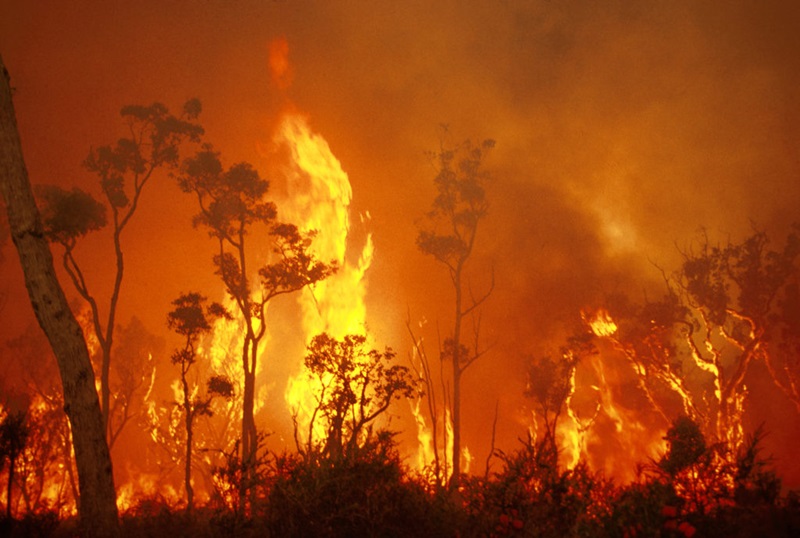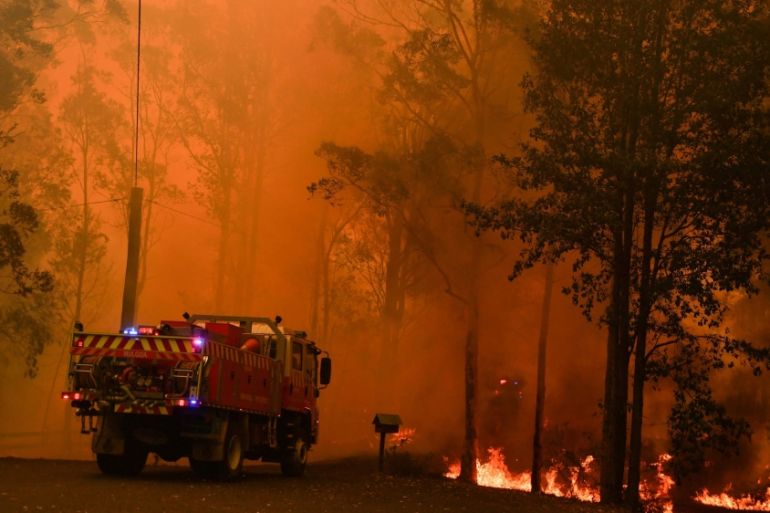Past Conformity: Enhancing Property Safety with a Comprehensive BAL Report
Past Conformity: Enhancing Property Safety with a Comprehensive BAL Report
Blog Article
The Value of Bushfire Administration in Fire Protection
In the world of fire security, the importance of reliable bushfire administration can not be underrated. As neighborhoods globally face boosting circumstances of wildfires, the positive technique to preventing and alleviating these all-natural calamities through strategic bushfire management methods has arised as a critical element. Past the immediate hazard to human life and residential or commercial property, the interplay in between bushfire monitoring and eco-friendly conservation, neighborhood involvement, and climate change positions intricate challenges that demand thorough remedies.
Importance of Proactive Bushfire Prevention
Proactive bushfire avoidance methods are essential in alleviating the devastating effects of wildfires on neighborhoods and communities. One vital element of aggressive bushfire prevention is fuel monitoring.
Additionally, producing firebreaks - cleared locations where greenery is strategically eliminated to create an obstacle to quit the progress or slow of a bushfire - is another essential aggressive measure. By applying these techniques, the spread of wildfires can be restricted, protecting both human lives and the atmosphere. Educating the public on fire safety and security methods and advertising area awareness regarding the importance of bushfire avoidance are essential components of proactive methods. Ultimately, positive bushfire avoidance plays a considerable duty in guarding areas and ecosystems from the harmful influences of wildfires.
Function of Community Engagement in Fire Defense
Engaging the neighborhood in fire defense efforts is essential to enhancing the performance of proactive bushfire prevention strategies. Neighborhood involvement plays a crucial duty in promoting a collective understanding of the threats presented by bushfires and the importance of readiness steps. By entailing regional homeowners, authorities can distribute important info ablaze security practices, emptying procedures, and early caution systems, empowering individuals to take aggressive actions to secure their lives and buildings.
By promoting a culture of readiness and partnership, neighborhoods can strengthen their ability to react properly to bushfire emergency situations, decreasing the impact on buildings and lives. Eventually, area engagement is a cornerstone of thorough fire security methods, highlighting the relevance of cumulative action in protecting vulnerable locations from the threat of bushfires.
Relevance of Wild Animals Conservation in Bushfire Administration
Preservation of wild animals plays an essential function in reliable bushfire management methods, making sure the security of diverse ecosystems and biodiversity in fire-prone areas. Wild animals conservation is crucial as it adds to the overall resilience of communities, helping in their capability to recoup and hold up against from the impact of bushfires. By conserving environments and shielding numerous types, the all-natural equilibrium within these ecosystems is kept, which is vital for their long-lasting health and wellness and sustainability.
Additionally, wildlife conservation additionally assists in lowering the threat and strength of bushfires. Healthy and balanced ecosystems with unspoiled wild animals populaces can function as all-natural firebreaks, decreasing the spread of fires and limiting their damaging possibility (BAL Assessment). Specific animal species, like delving pets or birds that spread linked here out seeds, play unique roles in stopping fires or assisting in the post-fire regeneration of environments
Incorporating wild animals preservation right into bushfire management approaches is not only necessary for securing biodiversity but additionally for advertising the overall health and wellness and resilience of environments despite increasing fire threats.
Advantages of Strategic Fuel Decrease Programs
Strategically carrying out gas reduction programs is necessary in reducing the threat and effect of bushfires in fire-prone regions. These programs include controlled burning, mechanical clearing up, and other approaches to minimize the amount of flammable plant life offered to sustain wildfires. By strategically reducing fuel lots in essential locations, such as close to household neighborhoods or vital infrastructure, the intensity and spread of bushfires can be dramatically lowered.
Among the main benefits of gas reduction programs is the enhancement of overall fire resilience in an ecological community. By producing calculated fuel breaks and minimizing the continuity of plants, these programs assist to disrupt the path of a bushfire, making it easier for firemans to consist of and extinguish the blaze. In addition, fuel decrease programs can shield biodiversity by stopping excessively intense fires that can ruin environments and threaten wild animals populaces.
Moreover, these programs can additionally protect human lives and building by lowering the threat of devastating fires that present a considerable threat to areas. Inevitably, tactical gas reduction programs play a vital duty in proactive bushfire administration and cultivating a safer setting for both individuals and nature.
Impact of Climate Adjustment on Bushfire Threat

Higher temperature levels cause drier vegetation, making it a lot more susceptible to ignition. Decreased rainfall in specific regions prolongs drought problems, further enhancing the flammability of the landscape. Additionally, the changing climate has actually altered wind patterns and atmospheric conditions, bring about more unpredictable fire actions and rapid fire spread.
As the climate remains to transform, the frequency and strength of bushfires are expected to increase, demanding a flexible More Help and proactive technique to bushfire monitoring. Approaches should progress to make up the altering threat landscape, incorporating environment estimates and taking into consideration long-lasting resilience in fire management planning. Dealing with the influence of environment modification on bushfire risk is important in establishing effective techniques to protect lives, residential property, and the environment.
Conclusion
In conclusion, aggressive bushfire avoidance, neighborhood interaction, wildlife conservation, calculated gas reduction programs, and factor to consider of climate modification are crucial elements in effective fire defense. By executing these strategies, we can better take care of bushfire dangers and safeguard both human lives and the environment. BMP. It is important that stakeholders interact to focus on these steps to reduce the devastating influence of bushfires on areas and communities

As the climate proceeds to change, the regularity and strength of bushfires are anticipated to climb, necessitating a flexible and proactive method to bushfire monitoring.In final thought, aggressive bushfire avoidance, community engagement, wildlife conservation, calculated gas reduction programs, and consideration of climate modification are essential elements in reliable fire protection.
Report this page